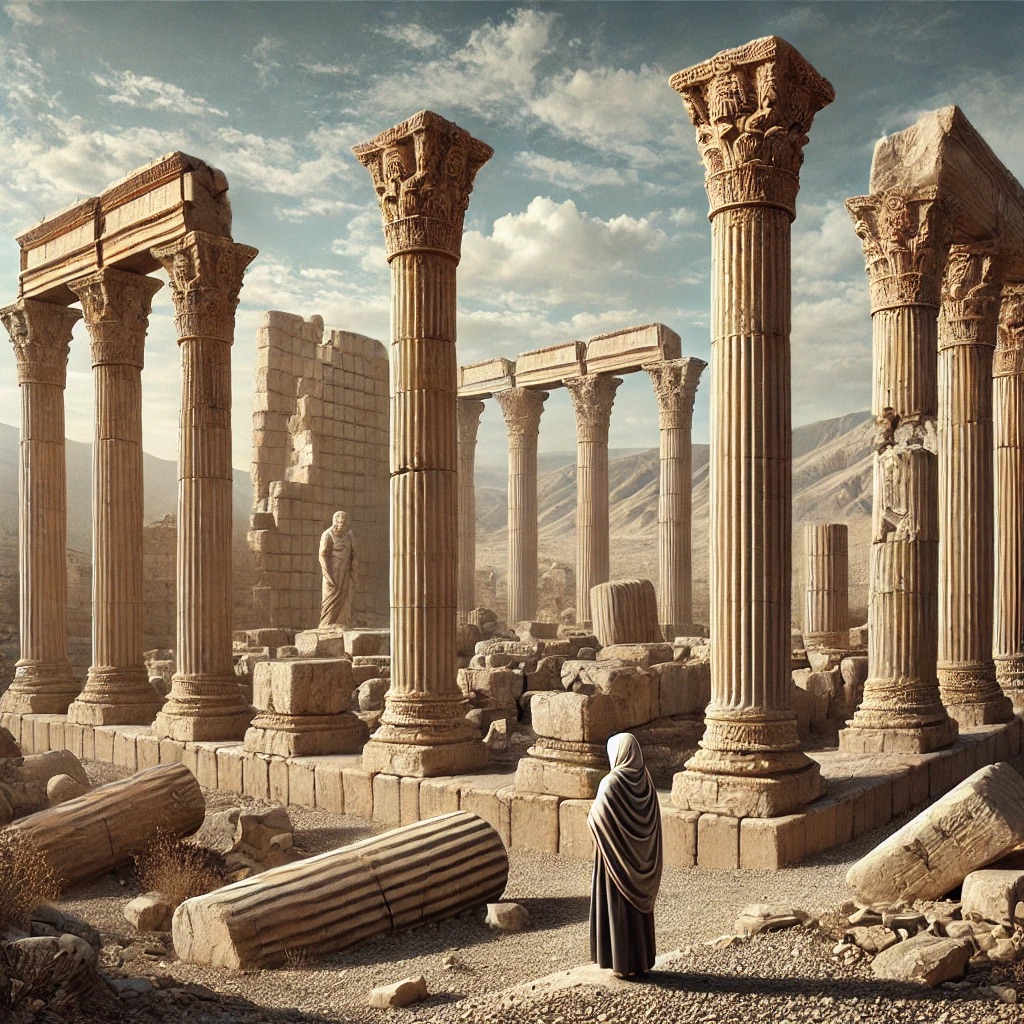ChatGPT:
Persepolis, located in present-day Iran, was the ceremonial capital of the Achaemenid Empire (circa 550–330 BCE). Founded by King Darius I in 518 BCE, it is one of the most impressive archaeological sites of the ancient world, symbolizing the grandeur of the Persian Empire.
The city was constructed on a massive terrace partly cut out of a mountain, showcasing the advanced engineering and artistic skills of its builders. The materials used include large stones, often decorated with detailed carvings, and the complex is surrounded by towering columns that once supported wooden roofs.
In 330 BCE, Persepolis was sacked and burned by Alexander the Great, marking the end of its significance as a center of power. Despite this destruction, the ruins of Persepolis remain remarkably well-preserved, offering a glimpse into the splendor of ancient Persia. The site is now a UNESCO World Heritage Site and a popular destination for those interested in history and archaeology.
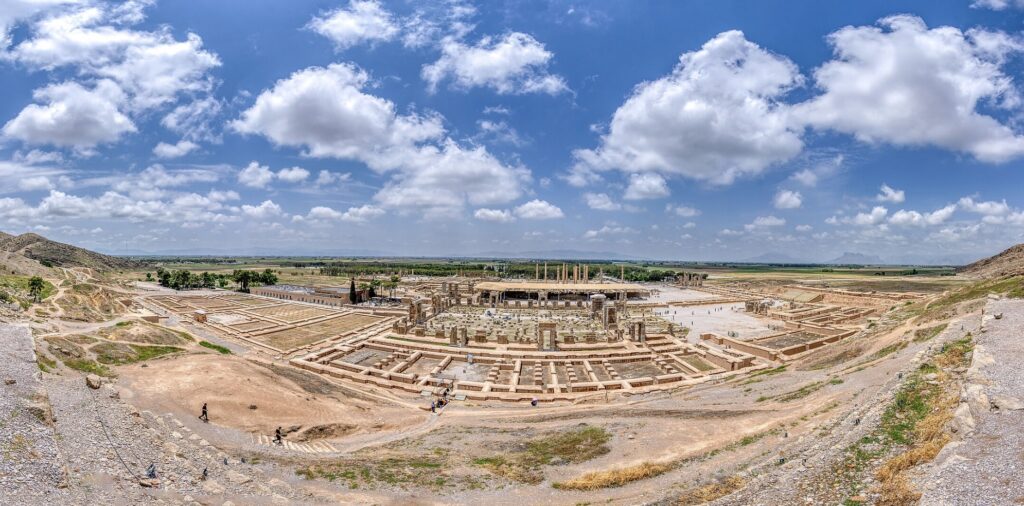
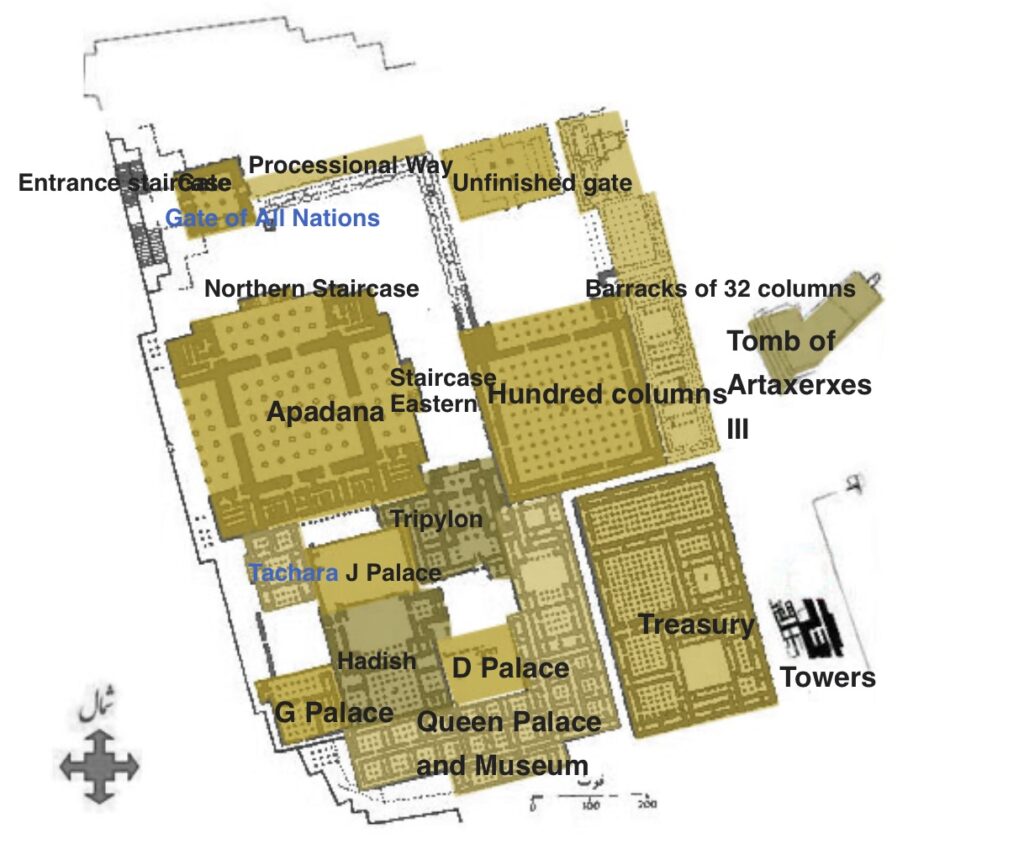
Origin of Persepolis
Persepolis, also known as Takht-e Jamshid in Persian, was founded by King Darius I around 518 BCE. The location was chosen for its strategic position in the mountainous region of Fars, near the modern city of Shiraz, Iran. The site was probably selected for its defensible location and its significance to the Achaemenid kings, who sought to create a new ceremonial capital that reflected the glory and power of their empire.
History and Construction
Foundation by Darius I:
Darius I, also known as Darius the Great, initiated the construction of Persepolis. He aimed to build a ceremonial capital that would symbolize the unity and diversity of the vast Achaemenid Empire, which stretched from the Indus Valley in the east to Egypt and the Balkans in the west. Construction began around 518 BCE, and the city was envisioned as a grand ceremonial complex rather than a residential or administrative hub.
The main features of Persepolis, such as the Apadana (audience hall), the Tachara (Darius’s palace), and the monumental staircases, were designed to impress visiting dignitaries and emissaries. The reliefs on the walls of the staircases depict processions of representatives from the various nations within the empire, bringing gifts to the king, thereby showcasing the empire’s diversity and Darius’s power.
Expansion Under Xerxes and Successors:
After Darius, his son Xerxes I continued the construction of Persepolis, adding new buildings like the Gate of All Nations, the Hall of a Hundred Columns (Throne Hall), and his own palace. These additions reflected the ongoing importance of Persepolis as the ceremonial center of the empire. Successive kings, including Artaxerxes I and Artaxerxes III, also contributed to the construction and decoration of the site.
Ceremonial Use:
Persepolis was primarily used for ceremonial functions, especially the Nowruz (Persian New Year) celebrations, when representatives from across the empire would gather to pay homage to the king. The city was a symbol of the empire’s wealth, power, and cultural achievements, although it was not the administrative or political capital—that role was filled by other cities like Susa, Babylon, and Ecbatana.
Development and Destruction
Architectural and Artistic Achievements:
The architecture of Persepolis was highly advanced, featuring a combination of Persian, Median, Mesopotamian, and Greek influences. The builders employed advanced techniques, such as the use of large stone blocks and sophisticated water management systems, including underground drainage. The artistic achievements are evident in the detailed bas-reliefs that adorn the staircases and walls, depicting scenes of the king, the royal court, and representatives of the various nations of the empire.
Destruction by Alexander the Great:
In 330 BCE, during his conquest of the Achaemenid Empire, Alexander the Great captured Persepolis. According to historical accounts, after initially sparing the city, Alexander allowed his soldiers to loot it. Later, in a symbolic act of revenge for the Persian destruction of Athens during the Greco-Persian Wars, he ordered the burning of the city. The fire destroyed much of Persepolis, marking the end of its significance as a center of power.
Rediscovery and Excavation:
After its destruction, Persepolis gradually fell into ruin and was largely forgotten. It wasn’t until the 17th century that European travelers, including explorers and diplomats, began to identify the site with the ancient descriptions of Persepolis. Systematic archaeological excavations started in the early 20th century, led by teams from the Oriental Institute of the University of Chicago and the Iranian Archaeological Service. These excavations uncovered much of the ruins and revealed the grandeur of the ancient city.
Legacy and Significance
Persepolis is now a UNESCO World Heritage Site and one of the most important archaeological sites in the world. It stands as a testament to the power and cultural achievements of the Achaemenid Empire, providing insight into the empire’s governance, art, and architecture. The site is also a symbol of Iranian national pride, reflecting the country’s rich historical heritage. Despite its destruction, the ruins of Persepolis continue to attract scholars, tourists, and those interested in the history of ancient Persia.
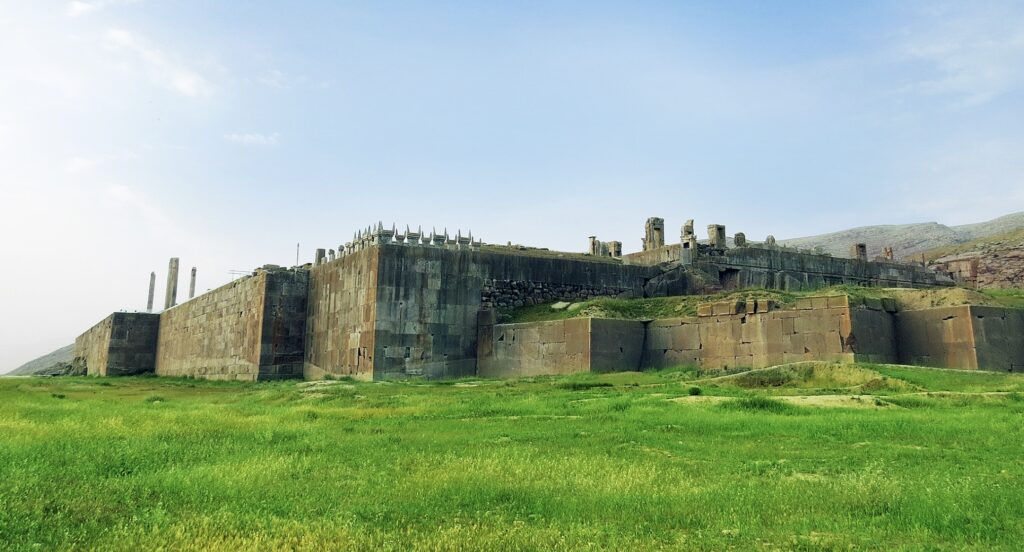
The most important remaining ruins at Persepolis include:
- Apadana (Audience Hall):
The Apadana is one of the largest and most impressive structures in Persepolis. It was used for large ceremonial gatherings, including the reception of representatives from across the empire. The hall originally had 72 columns, of which 13 still stand. The reliefs on the staircases leading to the Apadana depict scenes of tribute-bearing delegations from various parts of the empire.
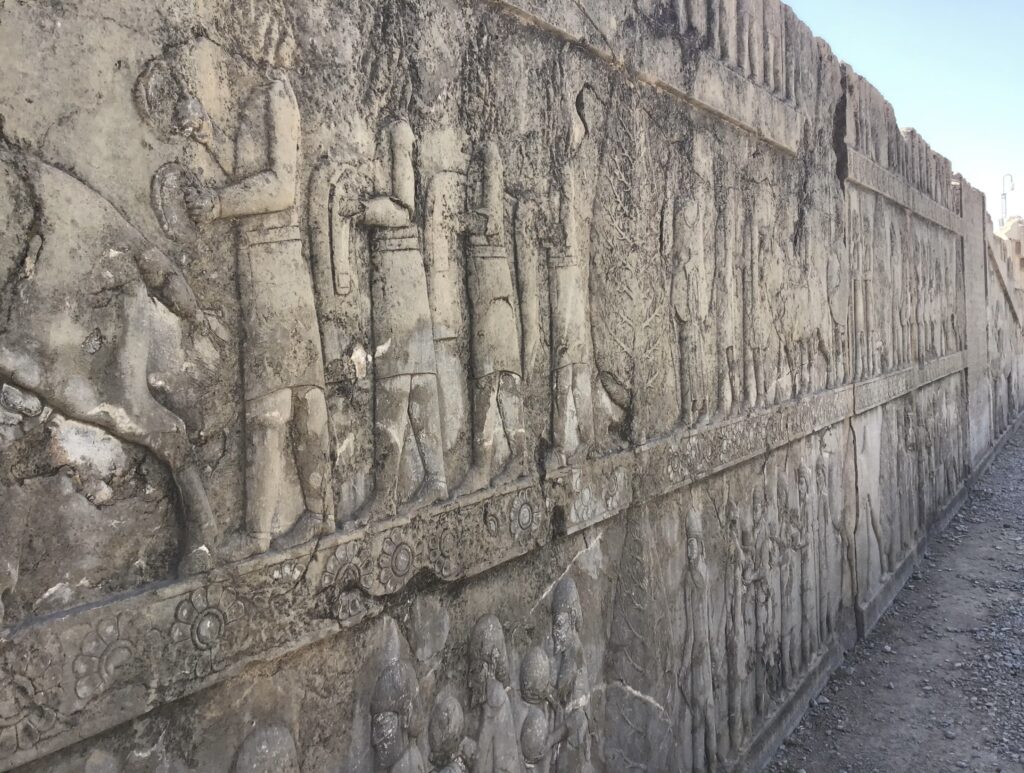
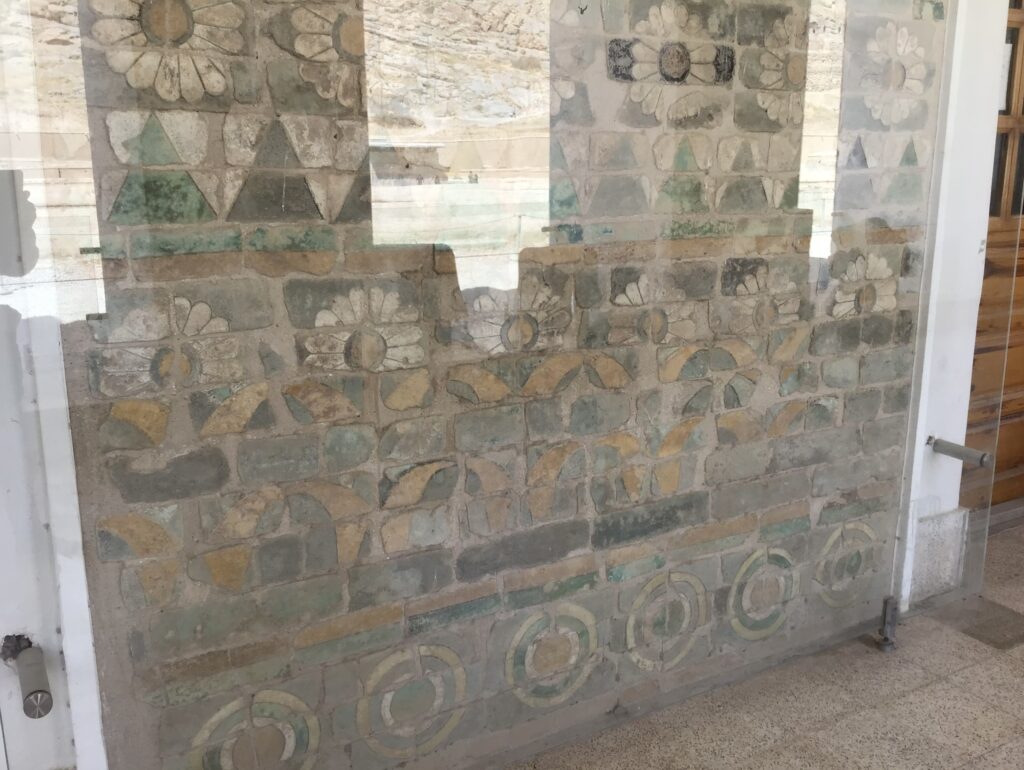
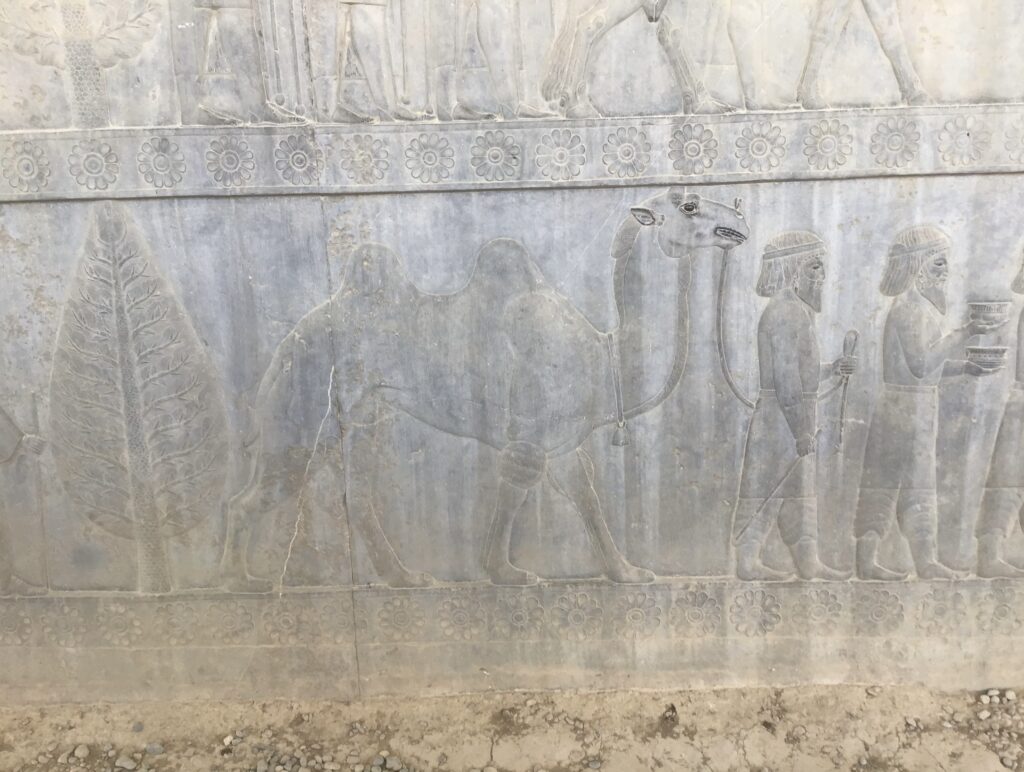
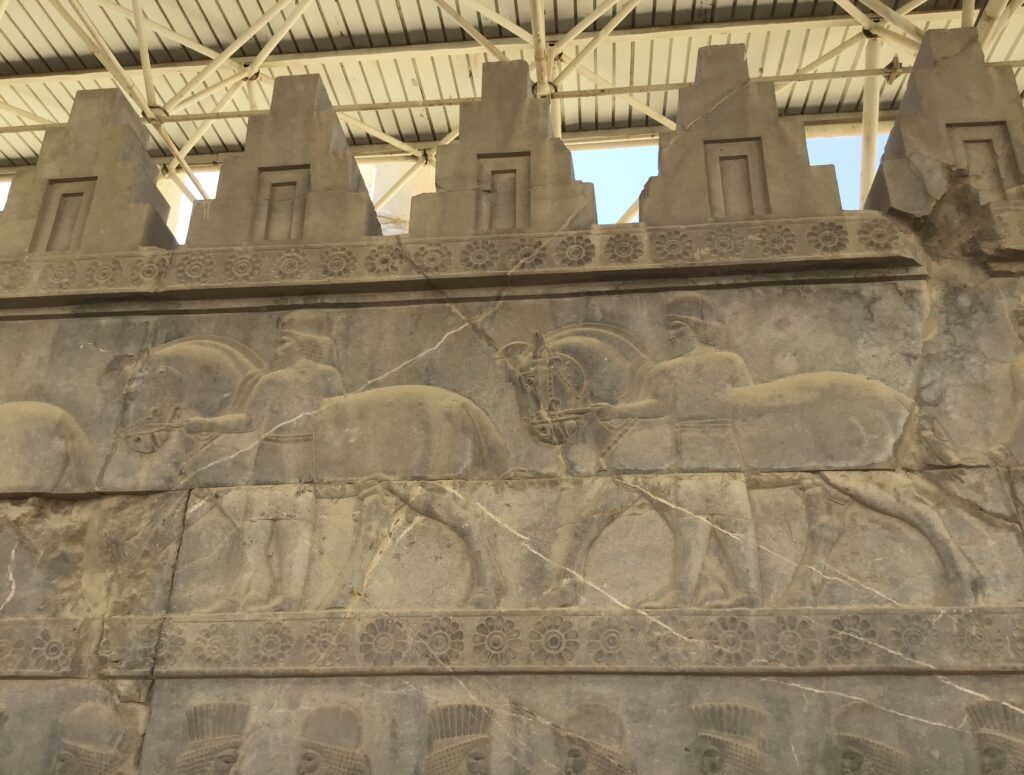
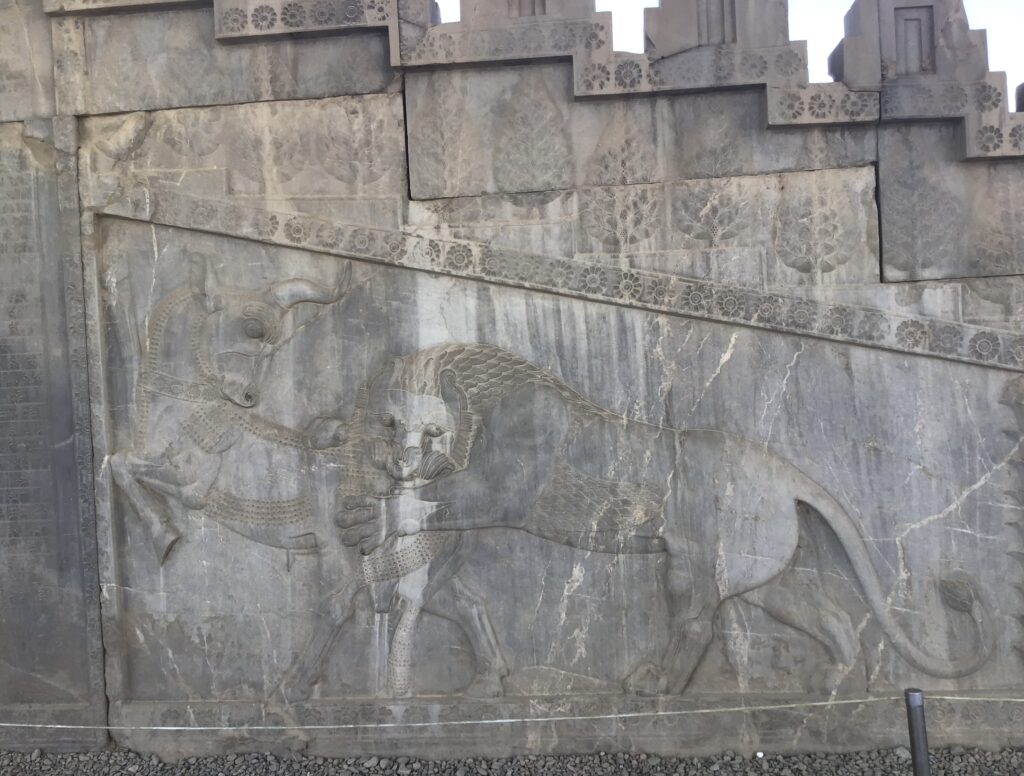
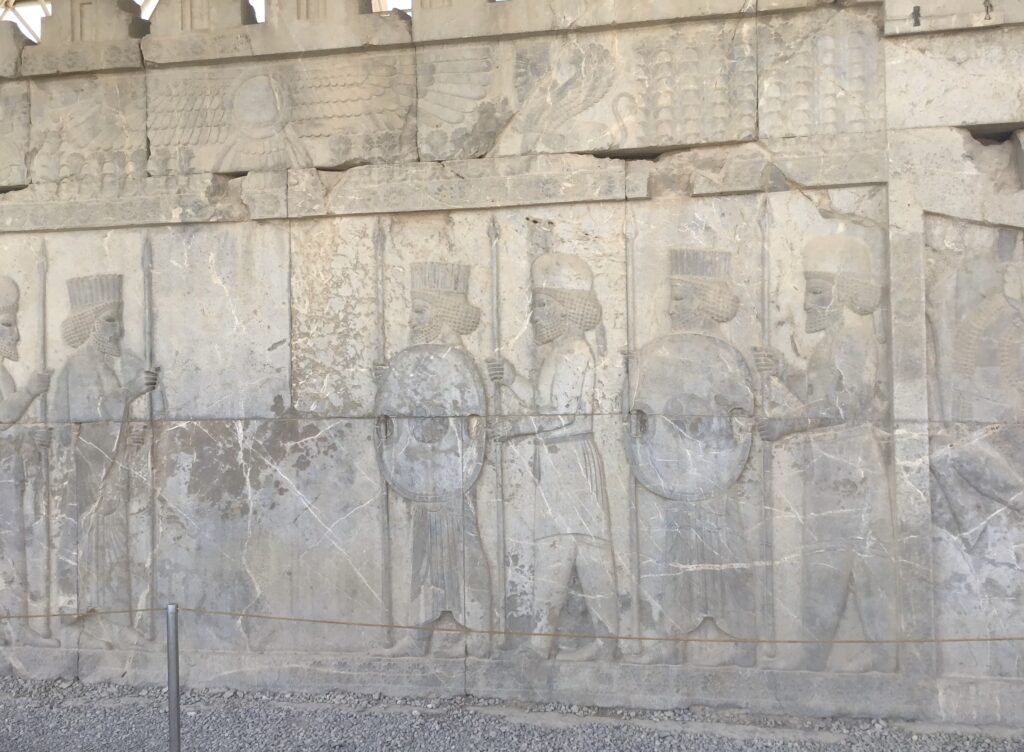
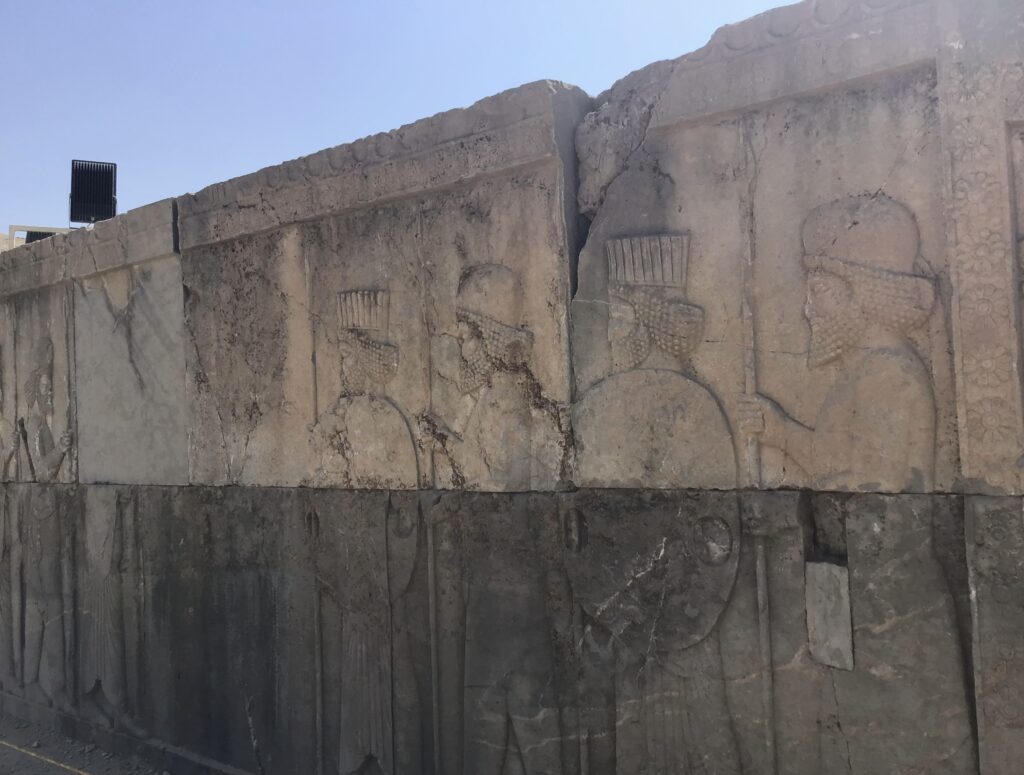
- Tachara (Palace of Darius I):
The Tachara is the private palace of Darius I and is one of the best-preserved buildings at Persepolis. It features detailed reliefs on its doorways and walls, showing scenes of the king and his courtiers. The reliefs are notable for their intricate detail and craftsmanship.
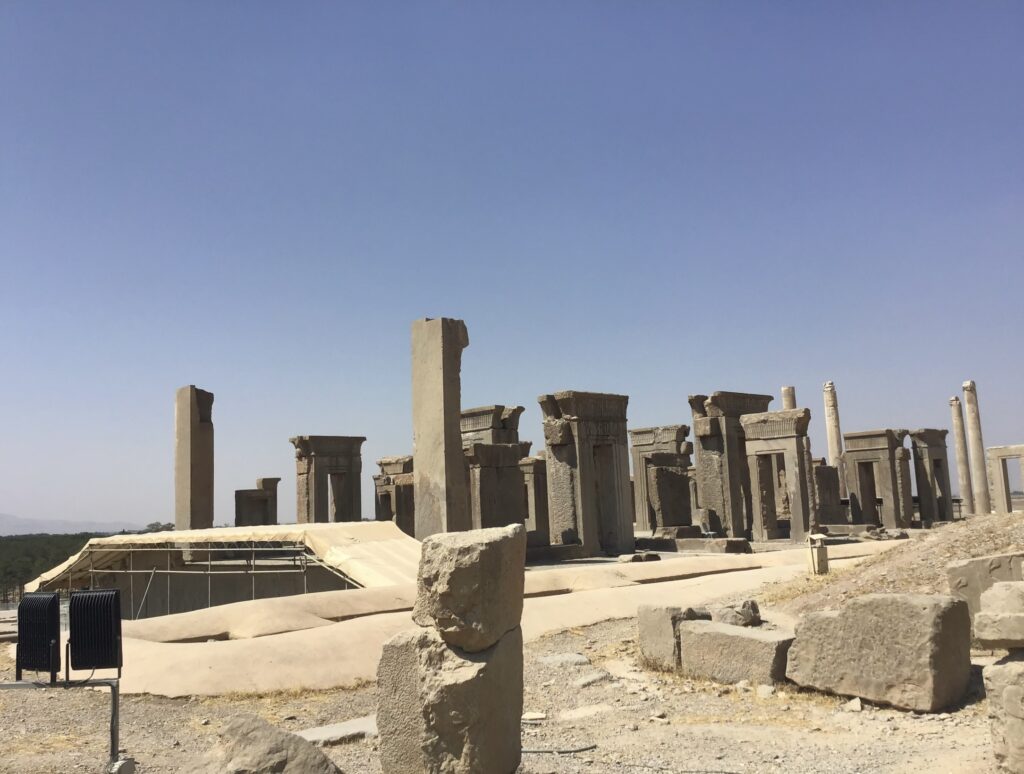
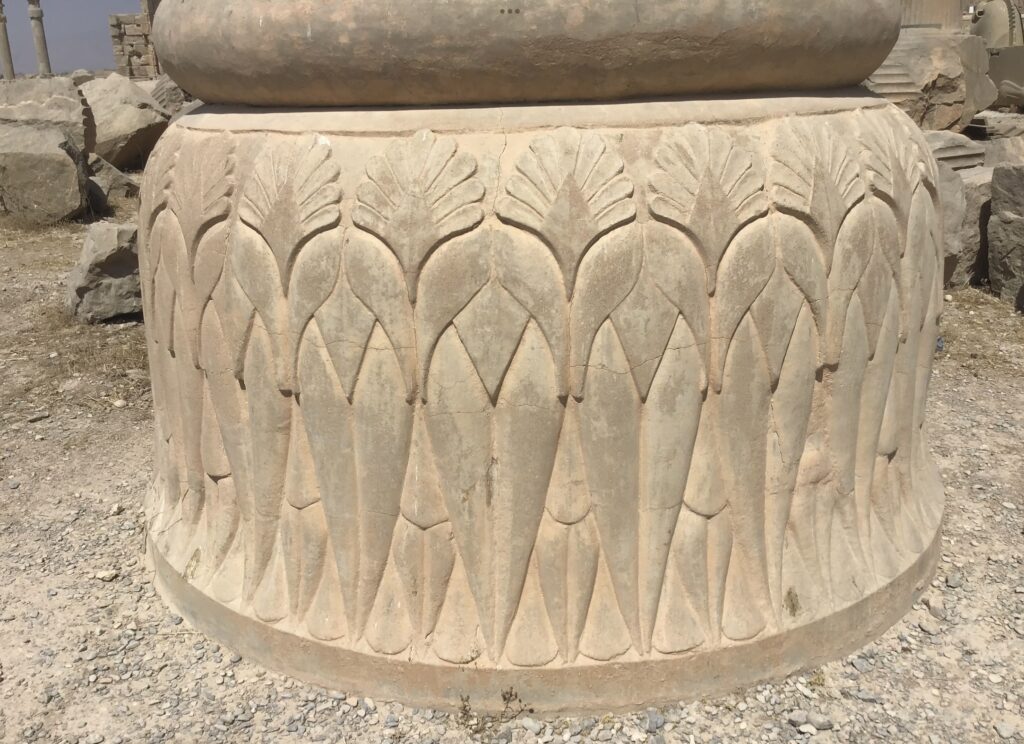
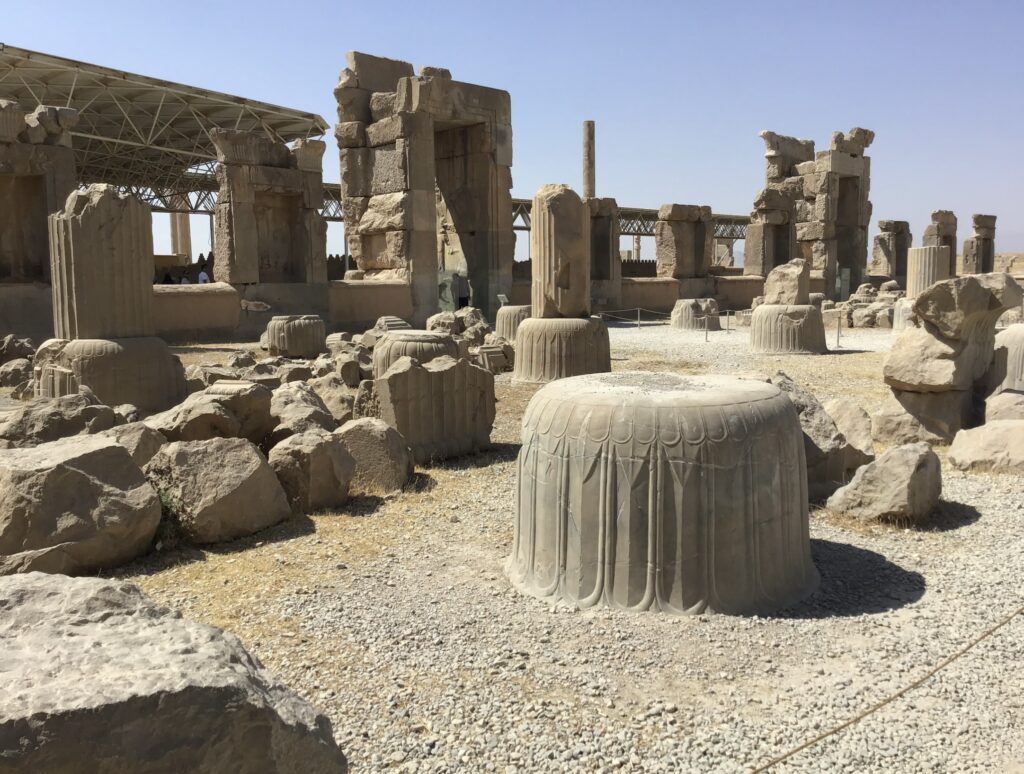
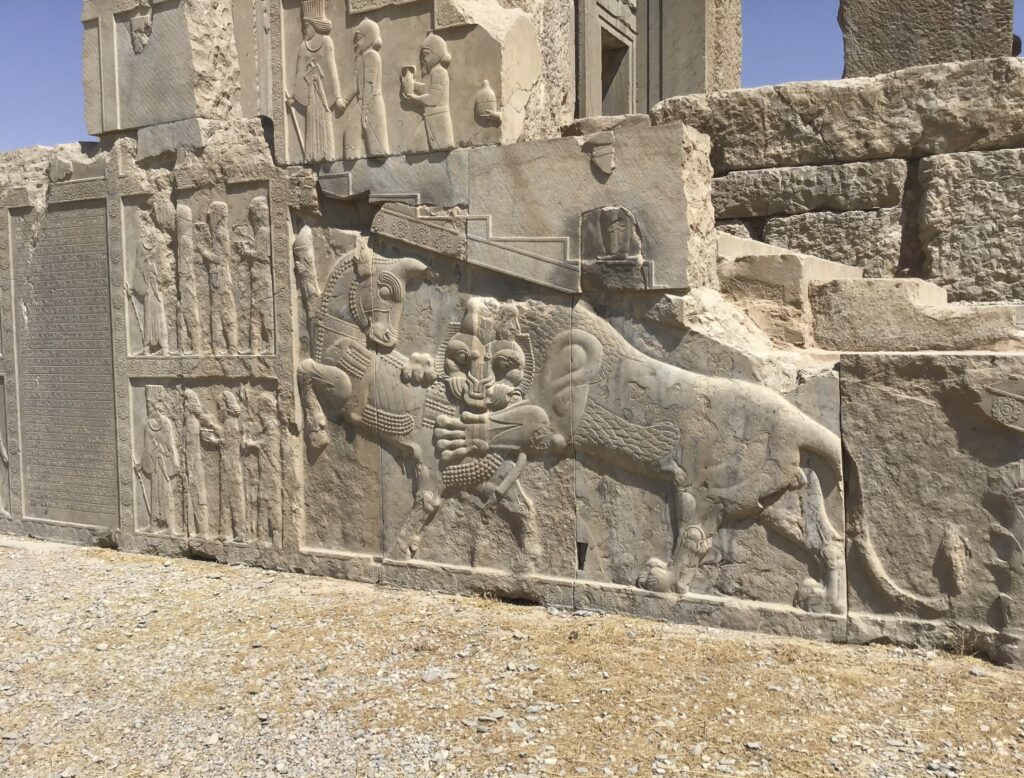
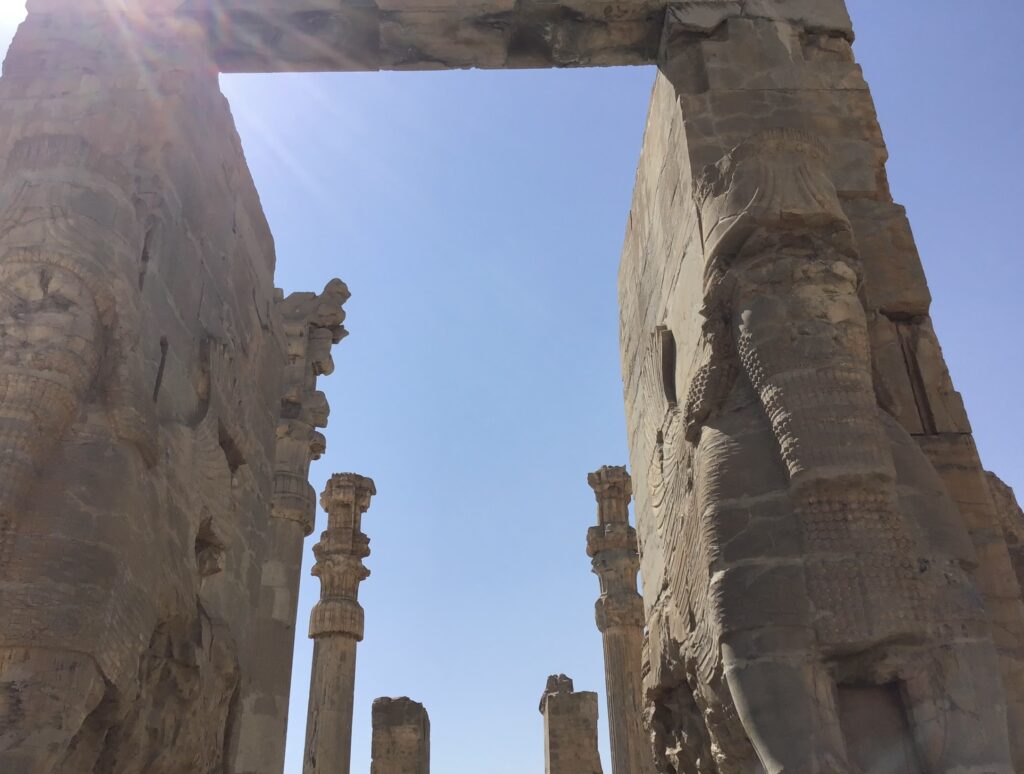
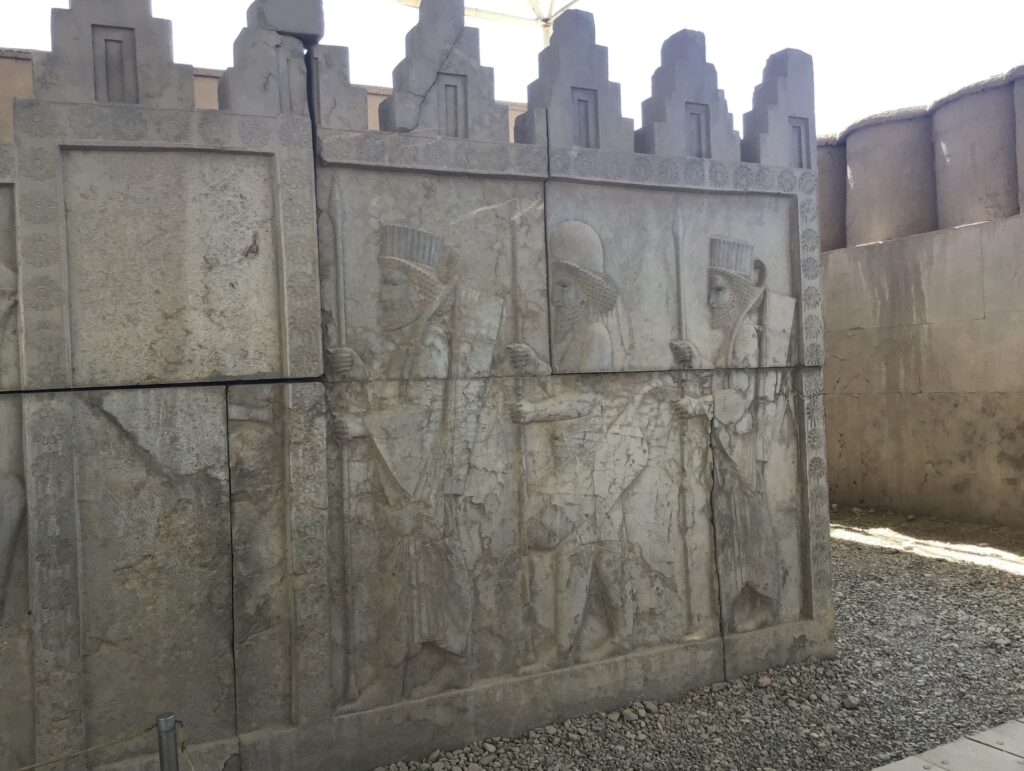
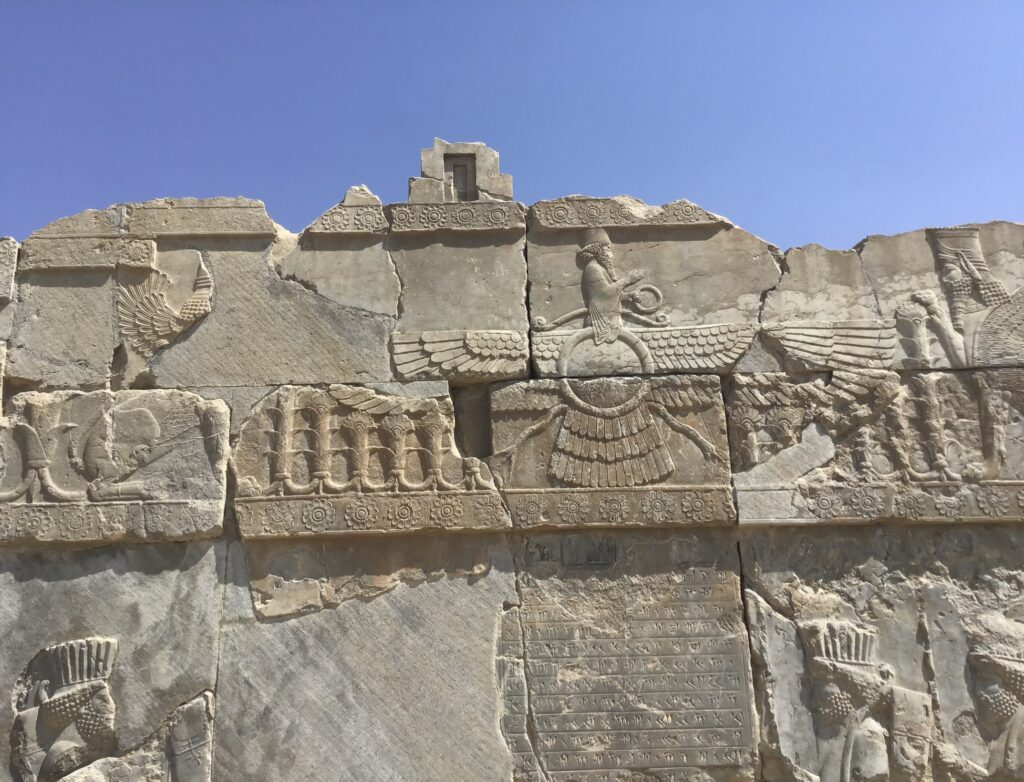
- Hadish (Palace of Xerxes I):
This was the private residence of Xerxes I, located to the south of the Tachara. Although less well-preserved than some other structures, the Hadish still contains impressive reliefs and column bases that give an idea of its original grandeur. - Gate of All Nations:
This structure served as the formal entrance to Persepolis. The gate was flanked by massive stone statues of bulls and mythical creatures, symbolizing the power of the empire. The inscriptions here are in multiple languages, reflecting the diverse nature of the Achaemenid Empire.
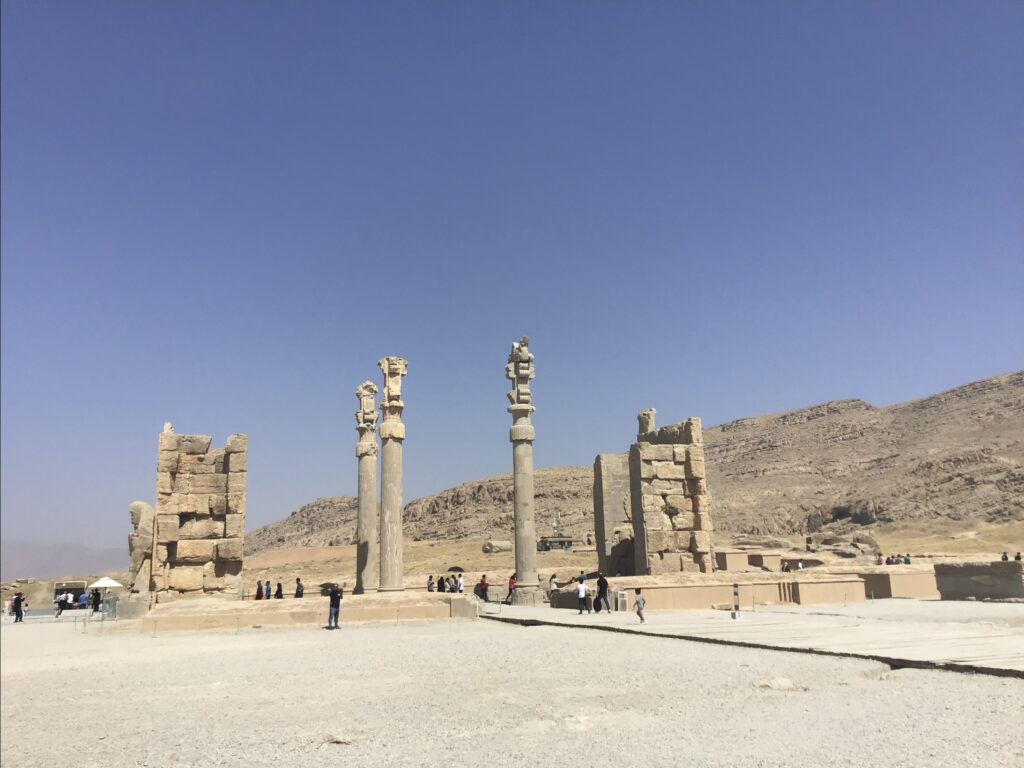
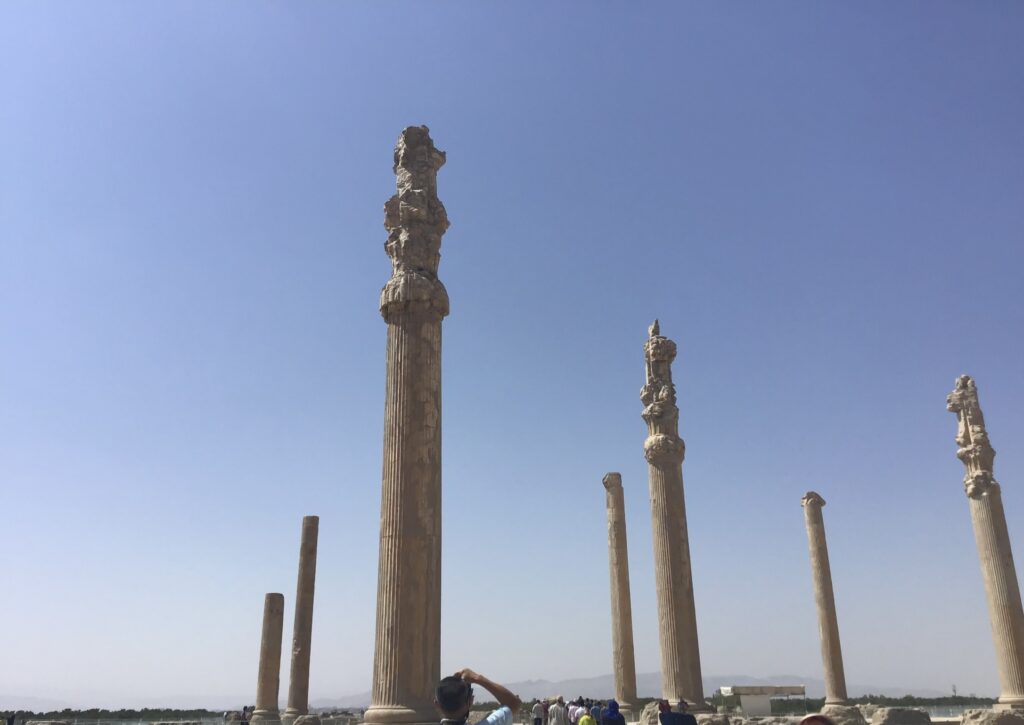
- Hall of a Hundred Columns (Throne Hall):
This vast hall was used for royal receptions and audiences. It was the second-largest building in Persepolis, featuring 100 stone columns, of which a few bases remain. The reliefs depict the king on his throne, surrounded by guards, nobles, and representatives from the empire.
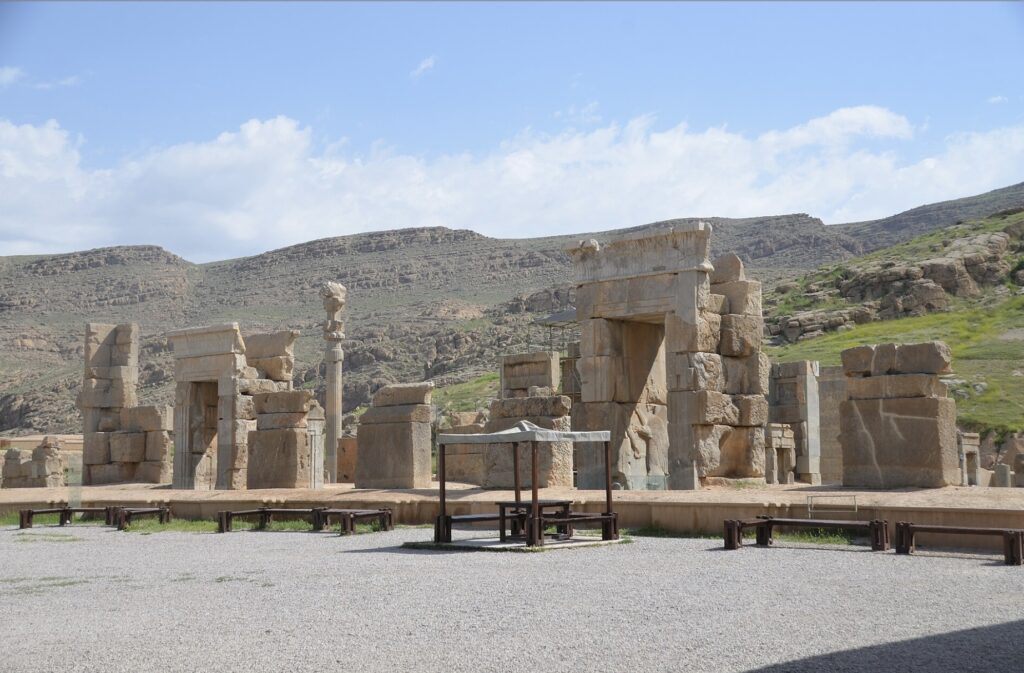
- The Treasury:
The Treasury of Persepolis was where the wealth of the empire was stored, including tribute from the various satrapies (provinces). Excavations have uncovered thousands of clay tablets, known as the Persepolis Fortification Tablets, which provide detailed records of the administration and economy of the empire.
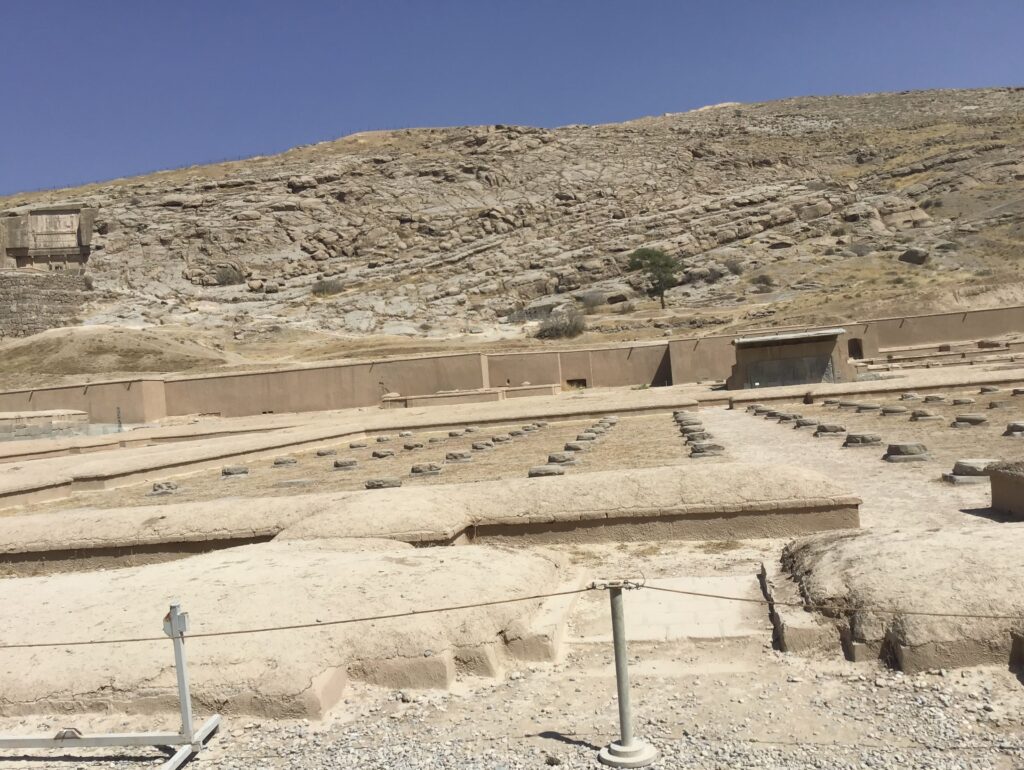
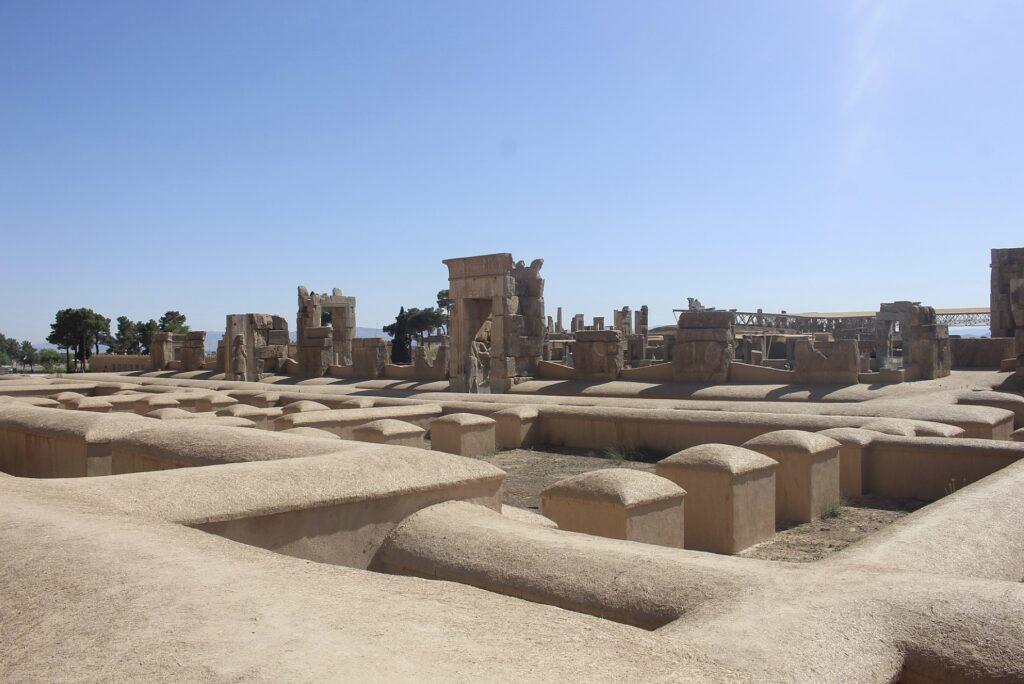
- Tombs of the Kings:
Just outside the main complex of Persepolis, on the hillside known as the “Mountain of Mercy” (Kuh-e Rahmat), are the rock-cut tombs believed to belong to Darius I, Xerxes I, Artaxerxes I, and Darius II. These tombs are adorned with large reliefs that show the kings standing before the Zoroastrian god Ahura Mazda. - The Tripylon (Council Hall):
The Tripylon, or “Triple Gate,” served as an entrance to the main palace complex. It was likely used as a meeting place for the king and his advisors. The surviving reliefs depict the king and attendants, as well as delegations from different parts of the empire.
These ruins are key to understanding the architectural and cultural significance of Persepolis and provide a glimpse into the grandeur of the Achaemenid Empire.
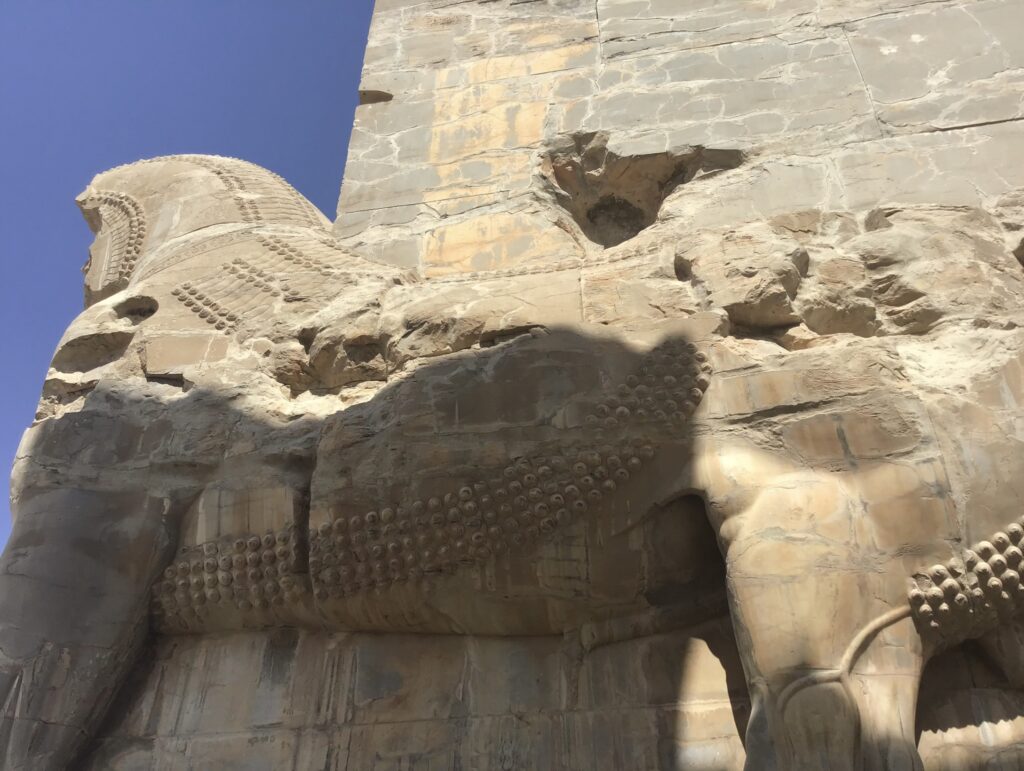
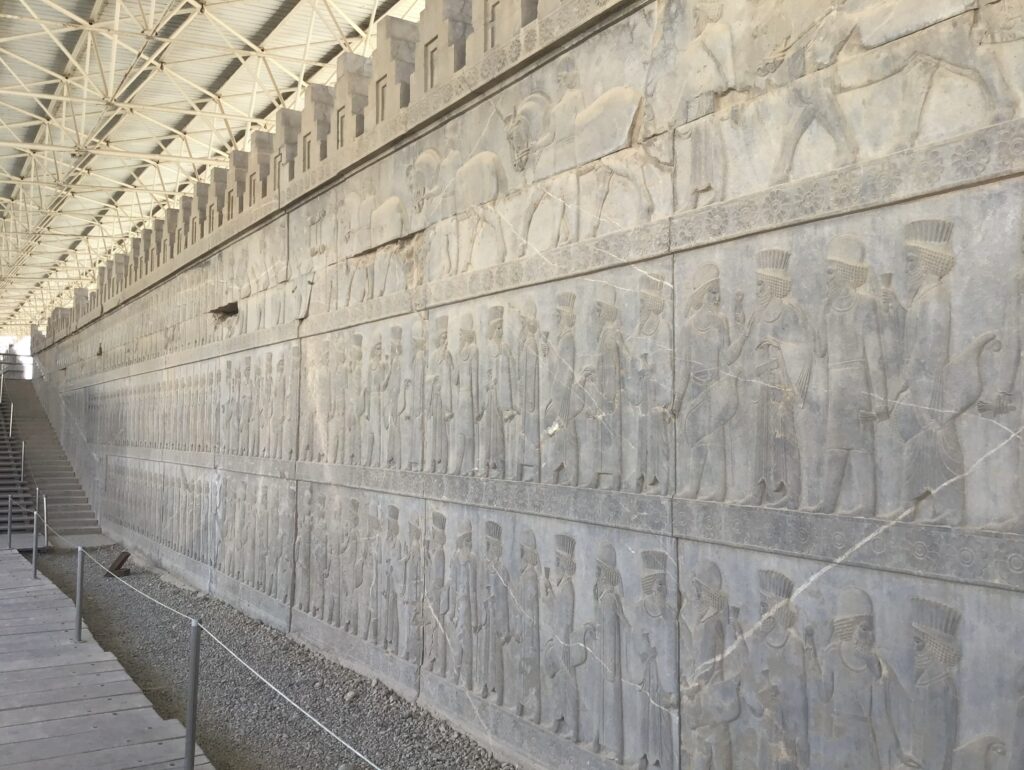
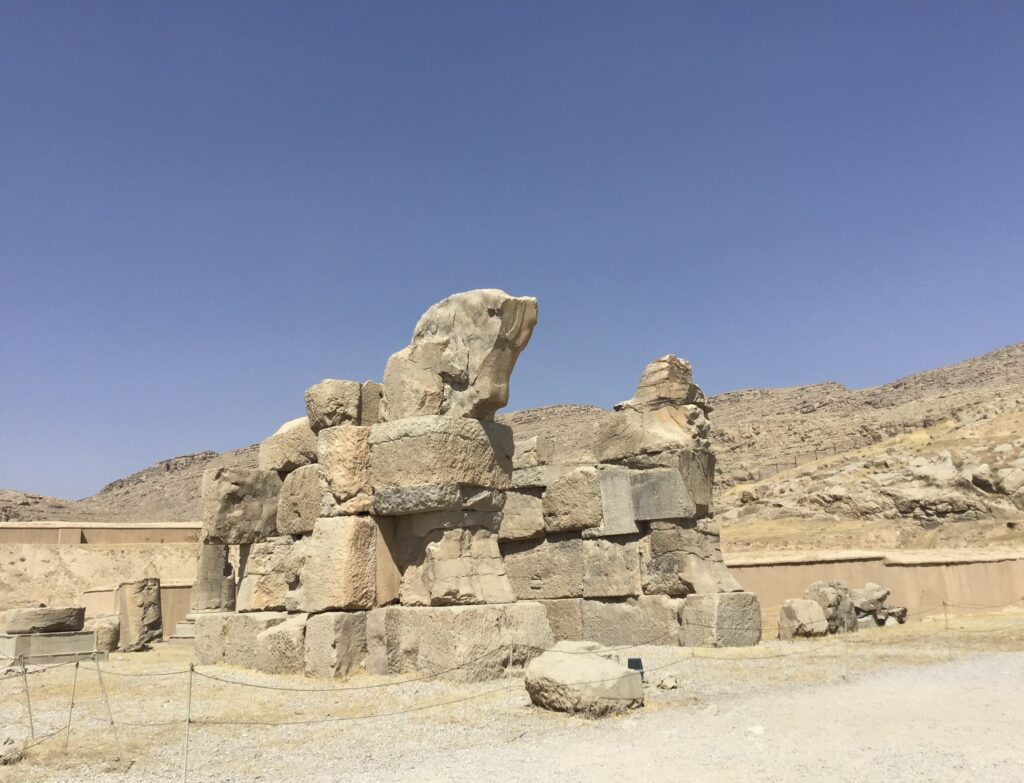
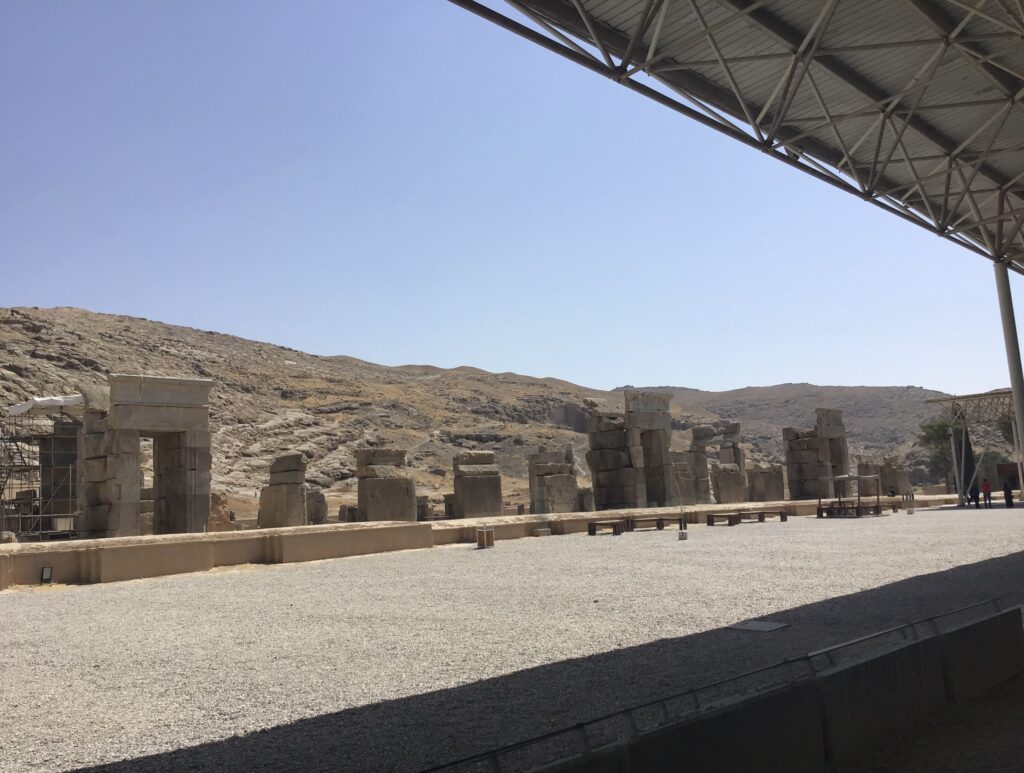

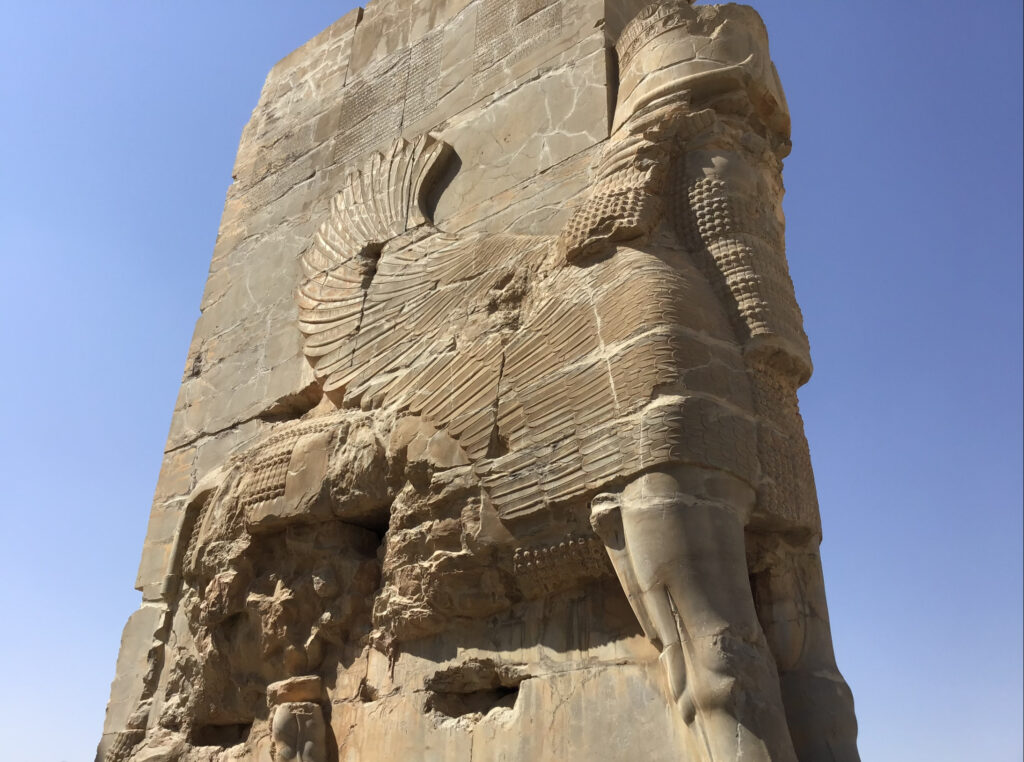

Here’s a suggested one-day itinerary for visiting Persepolis:
Morning
8:00 AM – Arrival at Persepolis
- Start your day early to avoid the heat and crowds. Arrive at the Persepolis site as it opens to make the most of your visit.
8:15 AM – Begin at the Gate of All Nations
- Enter the complex through the Gate of All Nations, which served as the grand entrance to Persepolis. Take time to admire the colossal statues of bulls and the inscriptions on the walls.
8:45 AM – Explore the Apadana (Audience Hall)
- Move on to the Apadana, the grand audience hall of Darius I. Spend time exploring the extensive reliefs on the staircases, which depict scenes of representatives from across the empire bringing tributes.
9:30 AM – Visit the Tachara (Palace of Darius I)
- Next, visit the Tachara, the private palace of Darius I. Examine the well-preserved reliefs and inscriptions, which provide insight into the daily life and ceremonies of the Achaemenid court.
10:00 AM – Explore the Hadish (Palace of Xerxes I)
- Continue to the Hadish, the palace of Xerxes I. Although less intact, the remaining reliefs and column bases are still impressive and worth exploring.
10:30 AM – Visit the Tripylon (Council Hall)
- Stop by the Tripylon, or “Triple Gate,” where the king and his advisors once met. The reliefs here also depict the king and his courtiers in various scenes.
11:00 AM – Tour the Hall of a Hundred Columns
- Head to the Hall of a Hundred Columns, the second-largest building in Persepolis. Imagine the grandeur of this space as you explore the few remaining columns and the intricate reliefs depicting the king and his subjects.
11:30 AM – Explore the Treasury
- Visit the Treasury, where the wealth of the empire was stored. The excavations here have revealed many artifacts, including the famous Persepolis Fortification Tablets.
Midday
12:00 PM – Lunch Break
- Take a break for lunch. There are a few local eateries near the site where you can enjoy traditional Persian dishes such as kebabs, rice, and fresh salads. Be sure to try some local favorites like “Fesenjan” (a rich pomegranate walnut stew) if available.
Afternoon
1:00 PM – Visit the Tombs of the Kings (Naqsh-e Rustam)
- After lunch, take a short drive to the nearby Naqsh-e Rustam, where the rock-cut tombs of Achaemenid kings like Darius I and Xerxes I are located. The tombs are adorned with large reliefs and offer stunning views of the surrounding landscape.
2:30 PM – Return to Persepolis: Explore the Lesser-Known Areas
- Return to Persepolis to explore some of the lesser-known areas or revisit your favorite parts of the complex. This is also a good time to capture some photos with the afternoon light, which casts a warm glow over the ruins.
3:30 PM – Visit the Persepolis Museum
- End your visit by exploring the small but informative Persepolis Museum, located on the site. The museum houses artifacts uncovered during excavations, including tools, pottery, and other relics from the Achaemenid period.
4:00 PM – Final Walk Through the Site
- Take a leisurely walk around the site one last time, absorbing the atmosphere and imagining what life might have been like during the height of the Achaemenid Empire.
4:30 PM – Departure
- Depart from Persepolis and reflect on your day at one of the most important archaeological sites in the world.
This itinerary provides a comprehensive overview of Persepolis, ensuring you see all the major highlights while also allowing time to appreciate the site’s historical significance.
